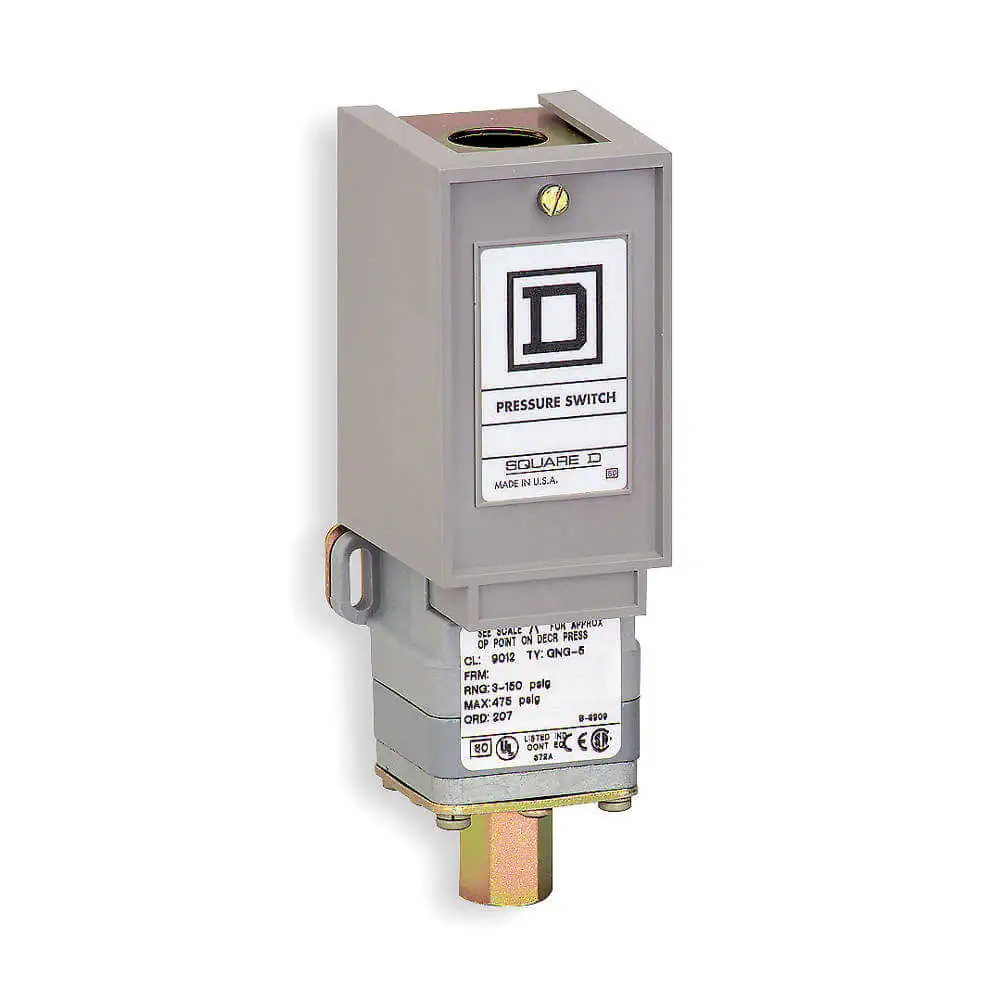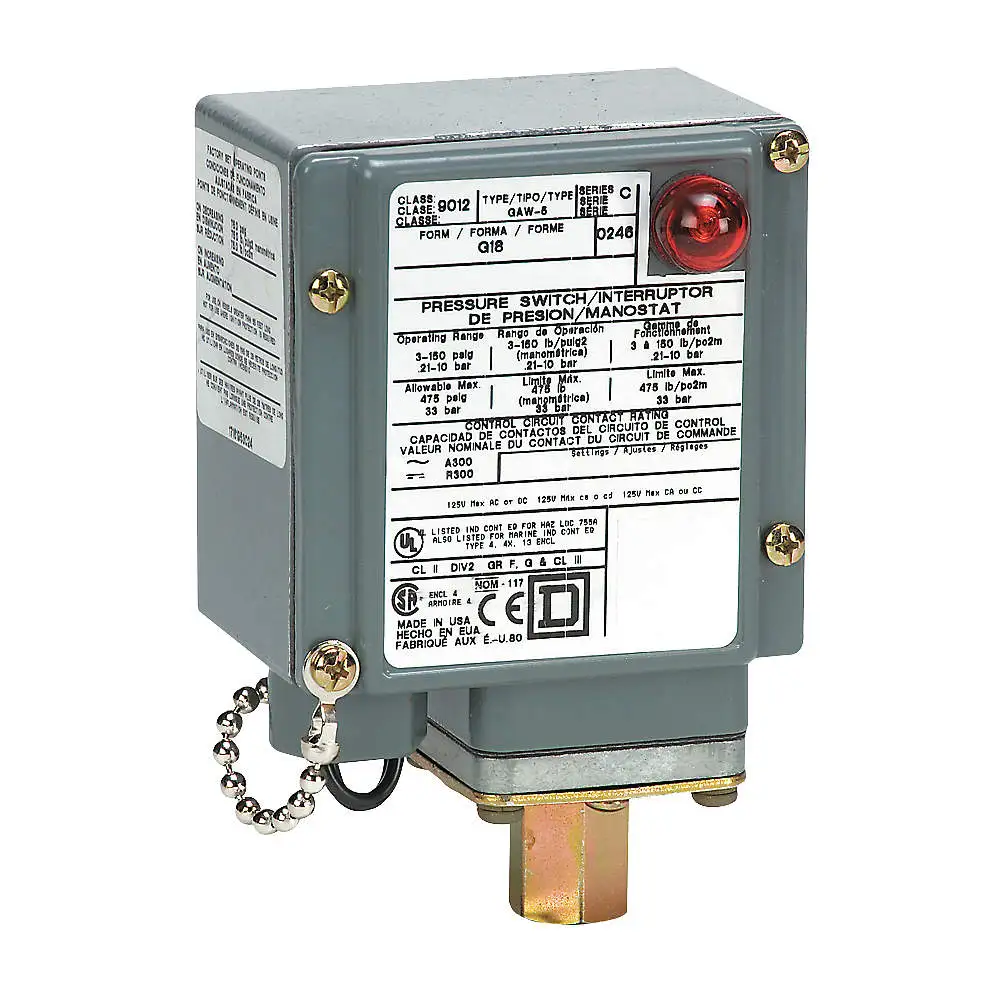Square D 9013FSG2J24 pressure switch is used in water supply & distribution plants and the HVAC, agriculture and oil & gas industries for pressure sensing & controlling compressors, moulding presses, injection moulders and jet, submersible & reciprocating pumps.
Working Mechanism:
- Mount the pressure switch securely in a suitable location.
- Disconnect power to the device you are controlling.
- Connect the inlet port to the water supply and the outlet port to your device.
- Locate the adjustment screw on top of the pressure switch.
- Turn the screw clockwise to increase the cut-in pressure.
- Adjust the screw to set the desired cut-in pressure.
- Set the cut-out pressure by adjusting the screw.
- If available, adjust the pressure differential to prevent rapid cycling.
- Reconnect the power to your device.
- Slowly open the water supply valve to observe the switch in action.
- Fine-tune pressure settings for optimal device operation.
Features:
- Square D 9013FSG2J24 pressure switch features screw clamp terminals for improved electrical connections and a 0.25-inch NPSF internal thread for enhanced fluid connections.
- This Schneider Electric switch is equipped with a diaphragm actuator that can be operated from any position.
- It comes with an adjustable differential scale to regulate the internal settings.
- This Pumptrol switch features a polypropylene enclosure for enhanced resistance to corrosive environments.
- It offers an electromechanical design to monitor and control pressure conditions for both industrial and end-user applications.
- This pressure switch can withstand power up to 3 horsepower at 240V in 3-phase configurations.
Frequently Asked Questions:
Q. How do I clean and maintain Square D 9013FSG2J24 pressure switch?
A.
- Power off the connected device to the pressure switch.
- Wear appropriate personal protective equipment (PPE).
- Inspect the pressure switch regularly for dirt, debris, or corrosion.
- Clean the exterior using a soft, dry cloth or brush.
- For thorough cleaning, dampen a cloth with mild soap and water, and wipe gently.
- Check pressure ports for blockages and use compressed air or a brush to clean.
- Inspect and clean exposed contacts using a brush or compressed air.
- Check seals and gaskets for wear or damage; replace if needed.
Q. How do I choose a pressure switch for my applications?
A.
- Define the pressure switch's role in your system.
- Identify required pressure levels.
- Ensure compatibility with fluid.
- Match voltage and current requirements.
- Consider operating conditions.
- Choose adjustable or fixed settings.
- Select suitable contact configuration.
Q. What safety precautions should I take while using this pressure switch?
A.
- Always disconnect power before handling or servicing the pressure switch.
- Allow only trained individuals to install, adjust or maintain the switch.
- Use the pressure switch within its specified temperature and humidity range.
- Ensure proper ventilation to prevent overheating of the switch.
- Verify that the pressure switch is suitable for the specific fluid or gas it will be exposed to.
- Do not exceed the maximum pressure ratings of the switch to prevent damage.
- Follow proper electrical wiring practices to avoid shocks or short circuits.
- Maintain the integrity of seals and gaskets to prevent leaks.
- Periodically check for wear, corrosion or damage and address issues promptly.
 Change Country
Change Country


